Explore the comprehensive guide to growing and caring for Flowering Maple plants (Abutilon). Learn essential tips for planting, watering and maintaining vibrant blooms in your garden or indoor space.
While not a true maple, Flowering Maple certainly share the compact, multi-stemmed form of their namesake. They blend the easy care of a houseplant with the showy flowering display of a patio tree. Here’s everything you need to know about growing these cheerful, long-blooming beauties.
Looking to add a touch of the tropics to your indoor garden? The flowering maple (Abutilon x hybridum) is the perfect pick! With lush green foliage and funnel-shaped blooms in shades of red, orange, yellow and pink, these small flowering trees deliver endless color and charm.
Here’s a short information chart about the Flowering Maple (Abutilon):
Flowering Maple (Abutilon)
| Feature | Details |
|---|---|
| Scientific Name | Abutilon |
| Common Names | Flowering Maple, Chinese Lantern |
| Family | Malvaceae |
| Native To | Tropical and subtropical regions worldwide |
| Description | Shrub with maple-like leaves and bell-shaped flowers |
| Flower Colors | Red, orange, yellow, pink, white |
| Flowering Season | Spring to fall |
| Light Needs | Bright indirect light |
| Watering | Keep soil evenly moist |
| Temperature | Prefers warm temperatures, protect from frost |
| Propagation | Seeds, cuttings |
| Uses | Ornamental garden plant, indoor houseplant |
| Special Features | Attracts hummingbirds |
What is a Flowering Maple?
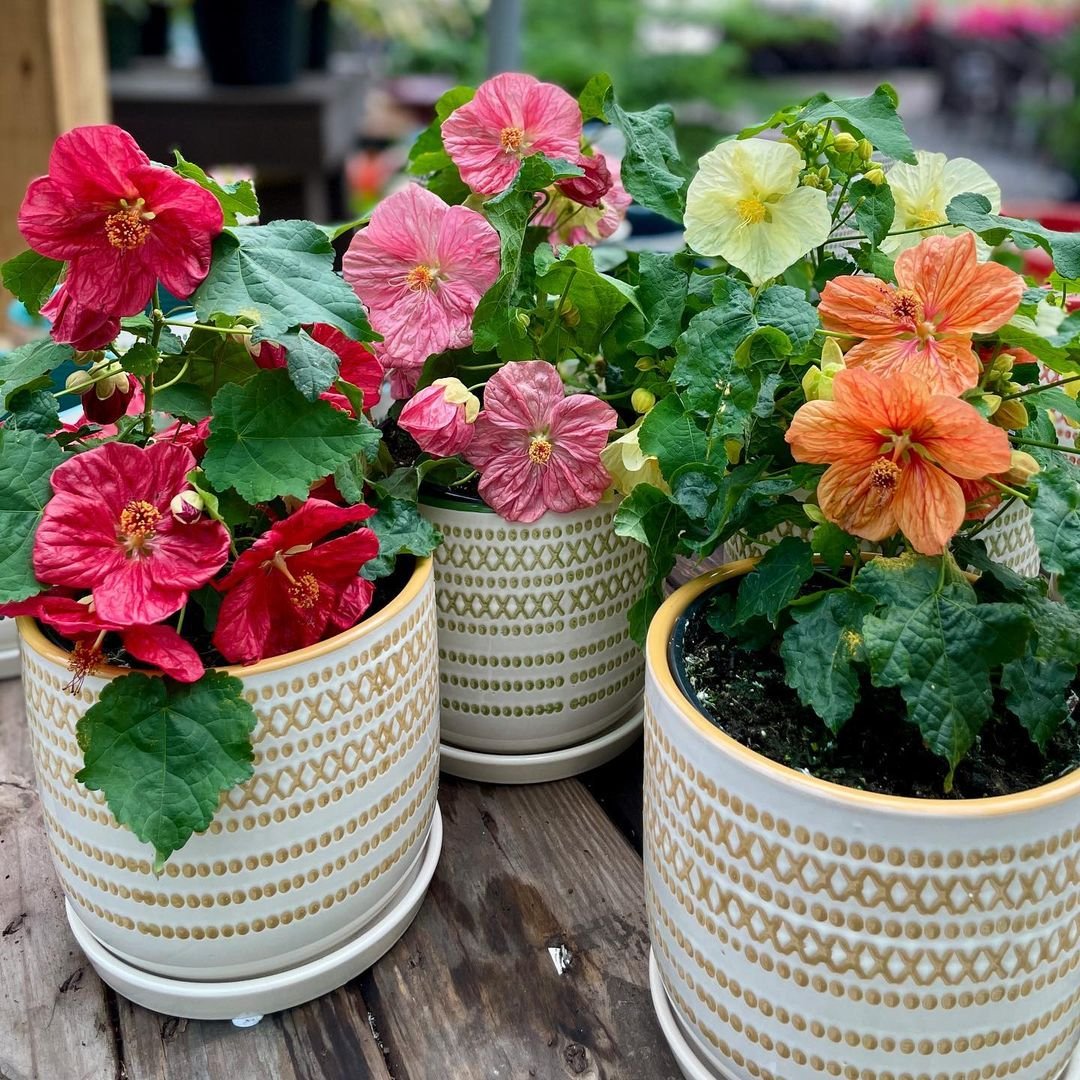
A flowering maple is a small tree or large shrub prized for its perpetual blooms and decorative foliage. It’s a hybrid created by crossing two tropical species – Abutilon insigne and Abutilon striatum – both native to Brazil.
This intergeneric cross resulted in plants that have the best characteristics of both parents. Flowering maples typically max out at 6-15 feet tall, though pruning keeps them at a compact 3-6 foot size. Their trademark blooms are not technically a flower, but rather a ring of overlapping petals called a calyx surrounding a central tube.
These plants belong to the Mallow family along with hibiscus, okra and cotton. Like their relatives, flowering maples feature distinctive palmate leaves and eye-catching blooms. But unlike their tropical cousins, these hybrids are far more tolerant of indoor conditions.
Growing Flowering Maples as Houseplants

In their native Brazil, flowering maples grow as small flowering trees reaching up to 15 feet tall. But these heat-lovers cannot tolerate freezing temperatures, making them ideal candidates for growing indoors in colder climates.
As a houseplant, flowering maple is wonderfully compact and versatile. You can allow yours to branch out into a small tree form by pruning minimally. Or snip it back often to maintain it as a large flowering shrub or topiary.
Indoors, expect your flowering maple to reach just 3-6 feet tall. The bushier the shape and more stems it develops, the better it will bloom. Let it set down deep roots, and these prolific bloomers will flower almost non-stop under the right conditions!
Lighting Needs
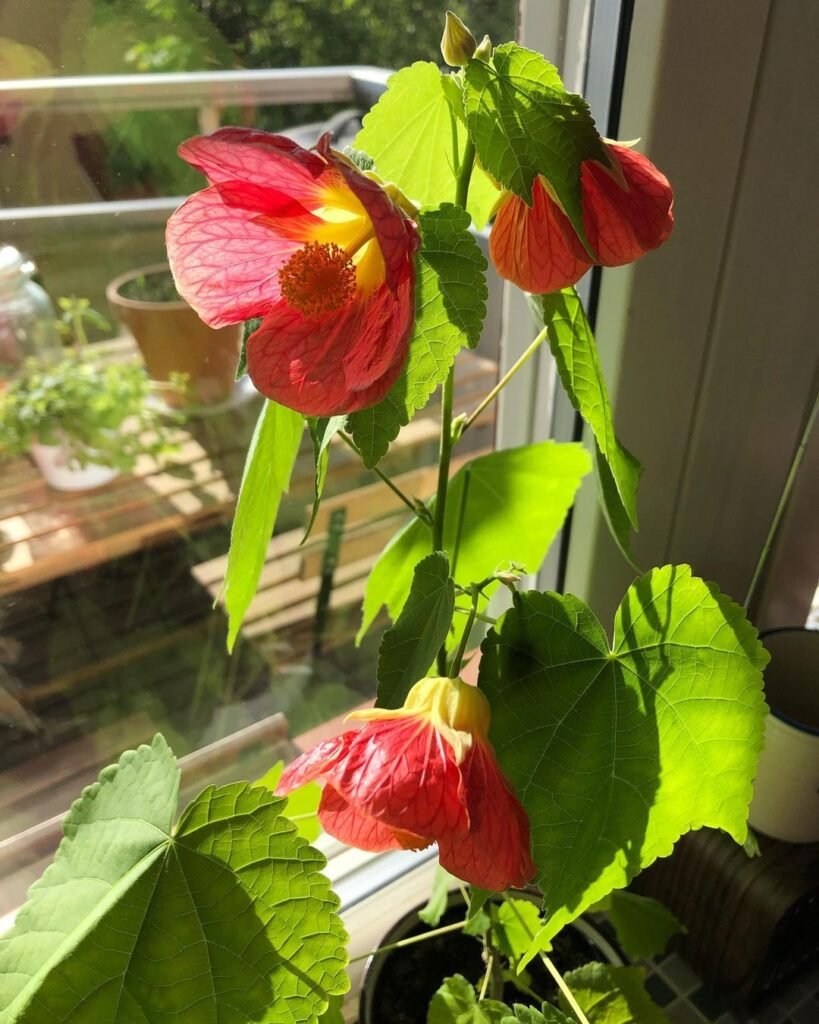
Just like outdoor flowering maples, houseplant varieties need bright, direct light to bloom their best.
An unobstructed south or west-facing window is ideal. Or place plants under supplemental grow lights if you don’t have a suitable window. Plants in low light will become spindly and bloom sparsely at best.
During the summer months, southern varieties can even spend some time outside in partial shade. Just be sure to acclimate them slowly and bring them back indoors before fall’s cooler temps.
Potting and Soil
Flowering maples need a rich and porous soil mixture to thrive. Regular potting soil alone won’t provide the drainage and nutrients required.
For best results, combine:
- 2 parts potting mix
- 1 part coco coir or peat moss to retain moisture
- 1 part perlite or coarse sand for drainage
- Optionally add compost to improve fertility
Use a pot with bottom drainage holes about 2 inches wider than the existing rootball to accommodate future growth. An unglazed ceramic pot is ideal as it allows excess moisture to evaporate through the sides.
Watering Needs
One of the biggest challenges of growing flowering maples indoors is maintaining the right soil moisture levels. These tropicals resent both soggy soil and extreme drought.
During the warmer spring and summer months when your plant is actively growing, aim to keep the soil evenly moist but not saturated. Feel the potting mix several inches down – it should moisten up after watering, but never become drenched or muddy.
Reduce watering slightly in fall and winter as growth slows down, allowing the top few inches of soil to dry between waterings.
Signs of Overwatering: Drooping, yellow leaves, lack of flowering, stem rot, fungal growth in the soil Signs of Underwatering: Crispy brown leaf edges, wilting, excessive leaf drop
Fertilizing Needs
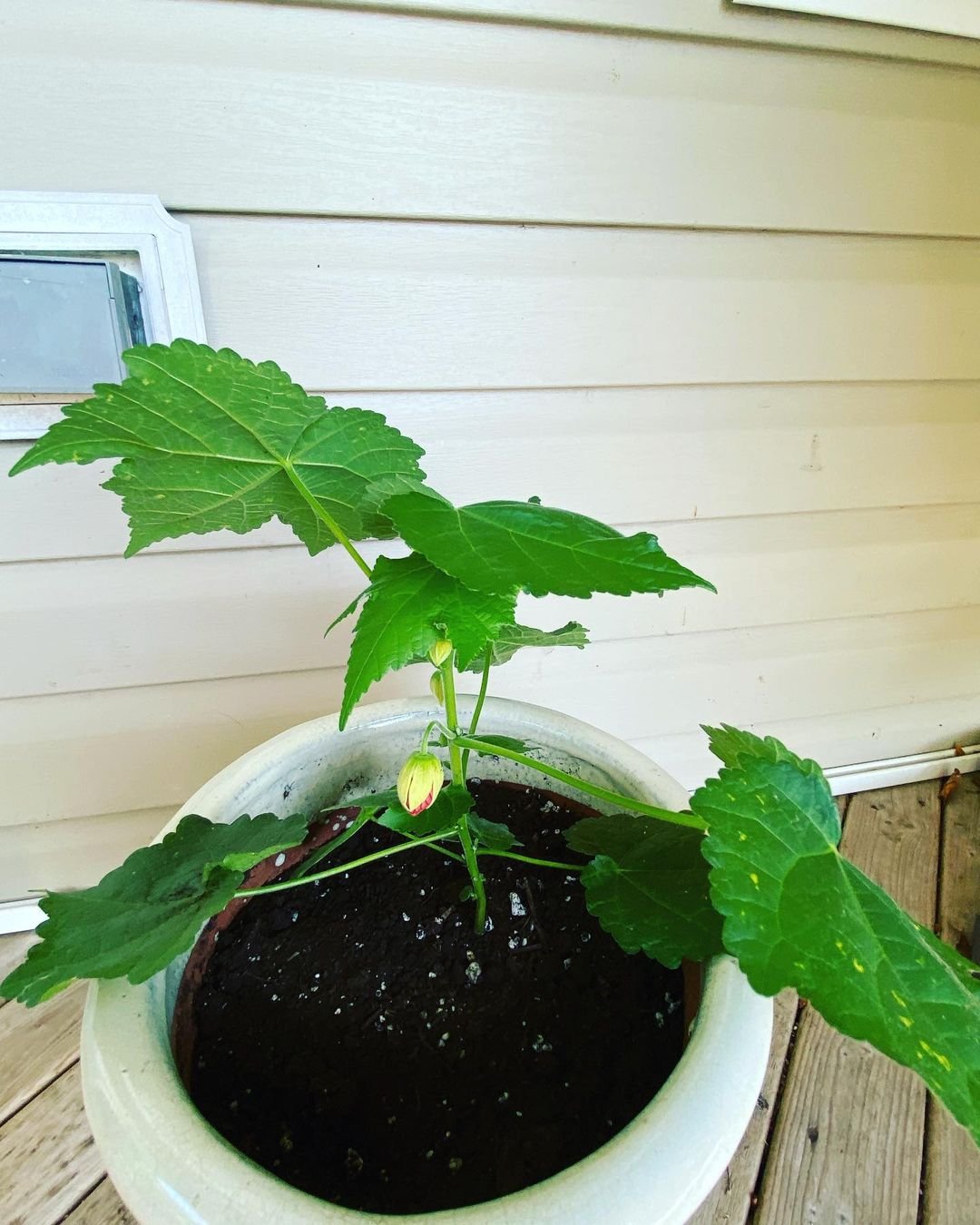
Flowering maples are moderate to heavy feeders that grow and bloom best with consistent fertilizing. Give plants a balanced, water-soluble fertilizer or compost tea every two weeks during the spring through early fall.
You can either use a balanced 10-10-10 or 20-20-20 fertilizer or opt for a bloom booster fertilizer like 15-30-15 once buds emerge. Following product directions, fertilizer rates vary but will generally be 1-2 teaspoons per gallon of water.
Discontinue feeding in late fall and winter as your plant goes semi-dormant. Too much fertilizer at this time leads to spindly, leggy growth and fewer blooms come spring.
Pruning and Pinching
Frequent pruning and pinching is required to maintain a bushy, floriferous form and control a flowering maple’s naturally upright growth habit.
To encourage a fuller, tree-like plant, pinch out the growing tips of new shoots regularly. This forces branching and keeps the plant pleasantly compact. On larger specimens, use clean bypass pruners to selectively remove wayward branches and thin the interior for better air circulation.
Shearing the entire plant back by one-third to one-half in spring before new growth emerges will keep it nice and densely branched for maximum flowering.
Pests and Diseases

Flowering maples in indoor containers rarely face serious pest or disease problems when properly cared for. However, keep an eye out for issues like:
- Mealybugs and scale on stems and leaves
- Spider mites causing stippled foliage and webbing
- Aphids clustering on new growth
- Root rot from overwatering
- Powdery mildew or leaf spot diseases
Treat insect pests by manually removing what you can, then apply insecticidal soap, neem oil or another houseplant-safe pesticide as needed. Prune out diseased foliage and apply an organic fungicide if issues persist.
The best way to prevent problems is with proper cultural care like providing good air circulation, avoiding overwatering, regularly removing spent blooms and debris and quarantining new plants.
Flowering Maple Varieties to Try
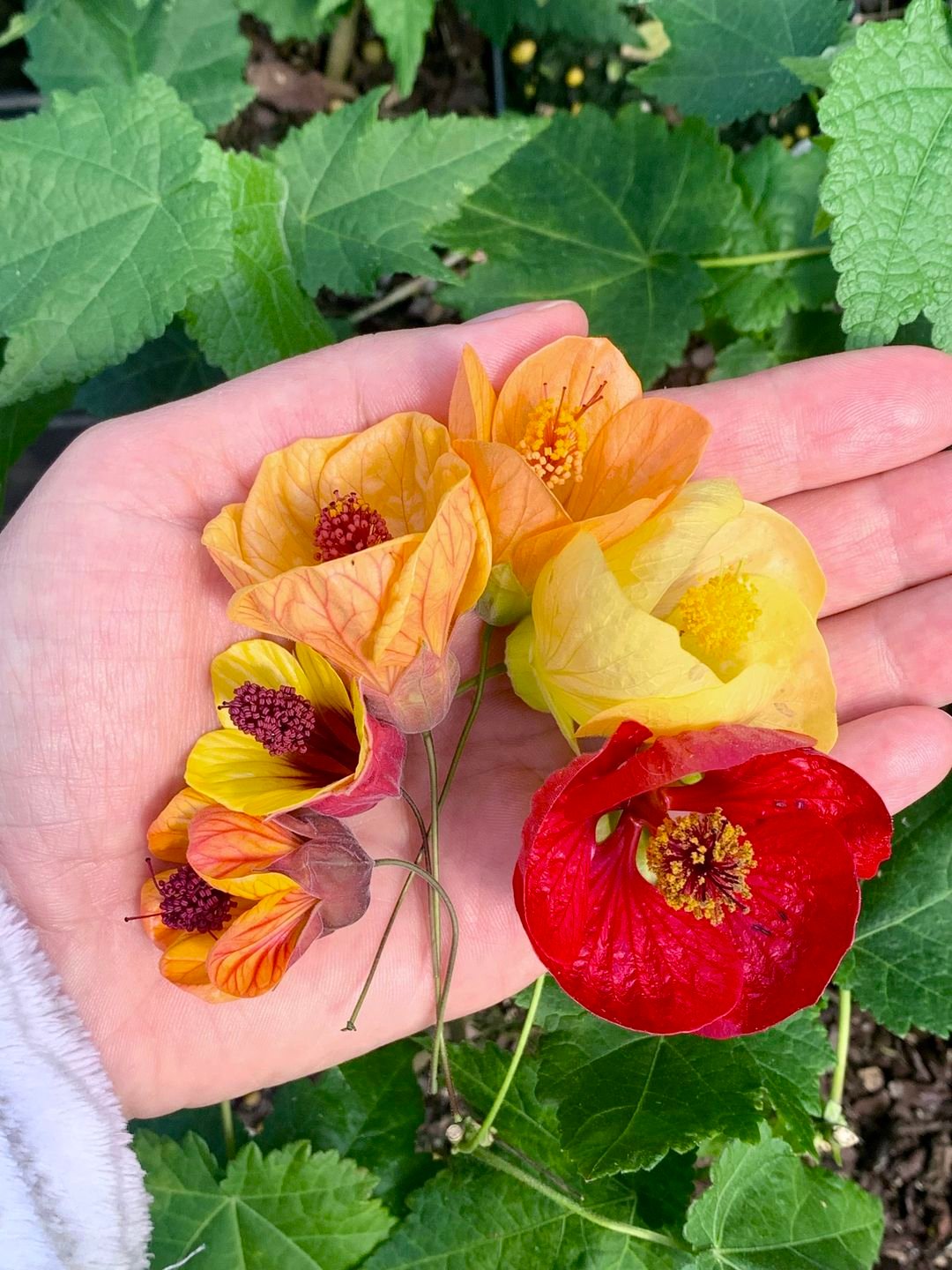
There are many fantastic flowering maple cultivars and hybrids to pick from. Popular choices include:
- ‘Crimson’ – Deep red flowers and bronze/red variegated foliage
- ‘Golden Dancer’ – Buttery yellow flowers and green leaves edged in golden yellow
- ‘Orange Hot Lava’ – Vibrant reddish-orange blooms on a compact plant
- ‘Souvenir de Bonn’ – Variegated green and white foliage with red-veined white flowers
- ‘Victor Reiter’ – Large orange blooms heavily splashed with red
- ‘Lucky Lantern’ Series – Compact plants with red, orange, yellow, or bi-color blooms
- ‘Whisky Cups’ – Light yellow calyces resembling tiny whisky tumblers
With so many colors, patterns and growth habits to choose from, it’s easy to find a flowering maple to suit any taste or growing conditions.
Design Ideas
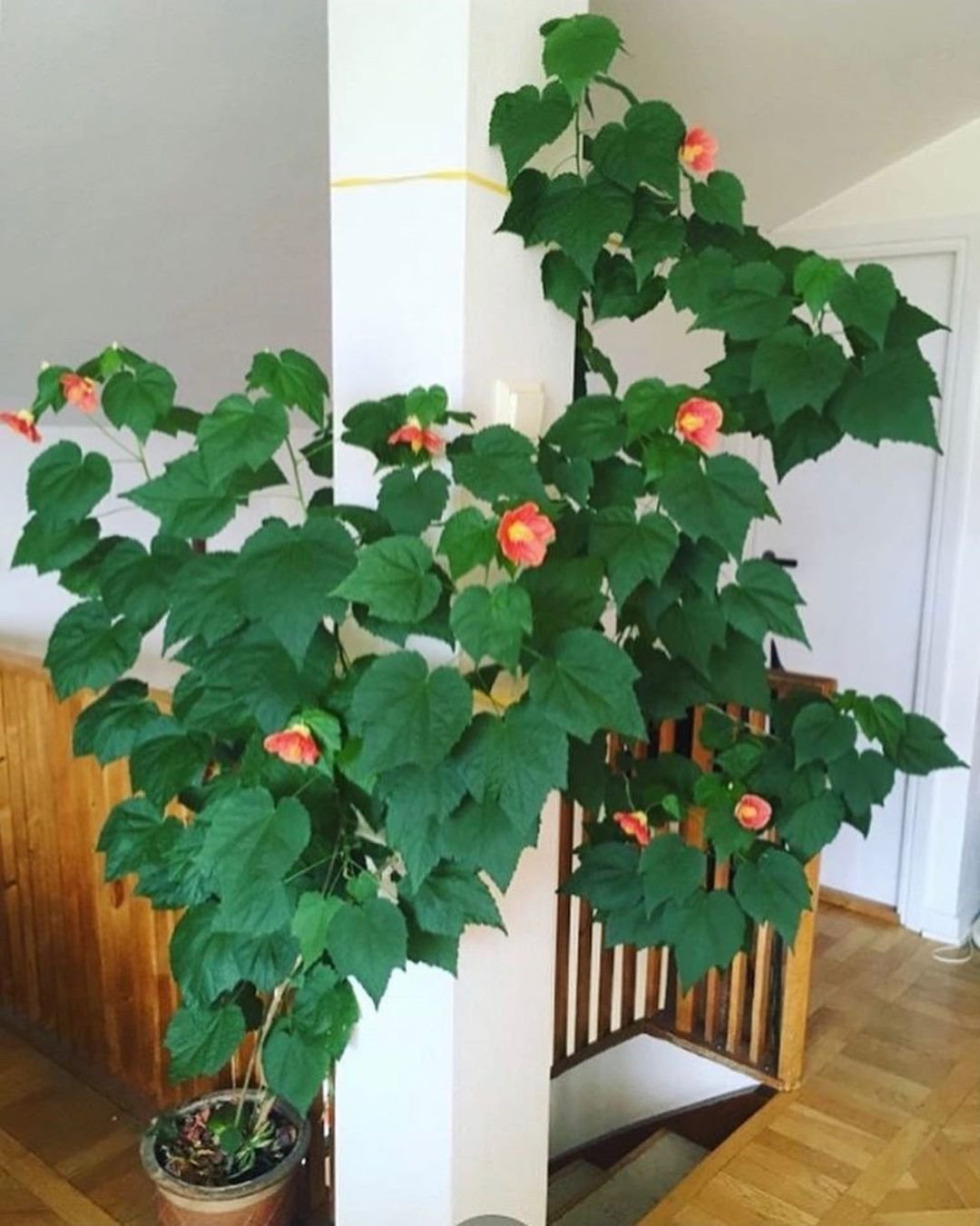
Thanks to their small stature and non-stop blooms, flowering maples make wonderful focal plants for tabletops, windowsills or mixed containers. A single specimen allows you to enjoy all the floral splendor up close.
For larger spaces, cluster several varieties together in a decorative planter for a lush, miniature flowering tree look. The bright colors and layers of textural foliage create tons of eye-catching appeal.
You can even try growing a flowering maple pruned into a standard with a single upright trunk and rounded canopy on top. Underplanted with trailing plants like ivy or baby’s tears, it’s a whimsical display that will have guests doing a double-take!
Propagating Flowering Maples
Propagating your own new flowering maple plants from seed is tricky. But you can easily expand your collection through stem cuttings.
The best time to take cuttings is in spring or summer when new growth is emerging. Use clean pruners to snip off 4-6 inch stem tips just below a leaf node. Remove the lowest leaves and dip the cut ends in rooting hormone.
Then, simply stick the cuttings around the edges of a pot filled with fresh potting mix. Keep the soil moist and provide bright, indirect light. Roots should develop within 4-8 weeks, after which you can transplant the new clones into their own containers.
You can also try air layering, which is an easy way to root sections of an existing plant directly on the stem.
Cold Hardy Flowering Maples
Most Abutilon hybrids are best suited to USDA zones 9-11 outdoors, as they cannot withstand freezing temperatures long-term. However, some newer varieties are more cold-hardy:
- ‘Crimson Charm’ – Hardy to zone 7, down to 0°F
- ‘Marilyn’s Choice’ – Hardy to zone 8, down to 10-15°F
- ‘Flora Plena’ – Hardy to zone 8, down to 15°F
In cooler zones, grow these semi-hardy cultivars as you would any other potted flowering maple indoors. Just move them outside to a sunny spot once weather warms in late spring. This gives them the heat and light they crave over summer.
Then, be sure to bring them back inside before overnight lows dip below 40°F in fall. Make sure to gradually acclimate your plants when moving them between indoors and out to prevent cold damage or shock.
Low-Maintenance Tropical Beauty

With their vibrant blooms, lush foliage, and easy-care nature, it’s hard to resist the allure of flowering maples! These compact tropical trees are perfect for adding a taste of the tropics to any indoor space.
From their bold inflorescences to eye-catching leaf patterns, there’s truly an Abutilon cultivar for everyone. Whether you grow yours into a miniature flowering tree or sculpt it into creative shapes, this plant is guaranteed to inject vibrant color and non-stop blossoms all year round.
So don’t settle for plain greenery alone! Brighten up your home’s interior with the lasting floral display of these showy bloomers. Your green thumb will thank you.
Pingback: Guide to Flowering: Making Your Mass Cane Thrive
Pingback: Explore 20 Fascinating Flowers Beginning with F - Gardener's School
Pingback: Amazing Trees that start with ‘M’ - Gardener's School
Pingback: Ultimate Guide: Trees That Start with ‘U’
Pingback: Amazing Discoveries: Trees That Start with ‘V’
Pingback: Beautiful Trees That Start With ‘Z’ - Gardener's School
Pingback: Maple Trees: A Complete Guide to Varieties and Care
Pingback: Nature’s Beauty : Trees That Start with ‘Q’